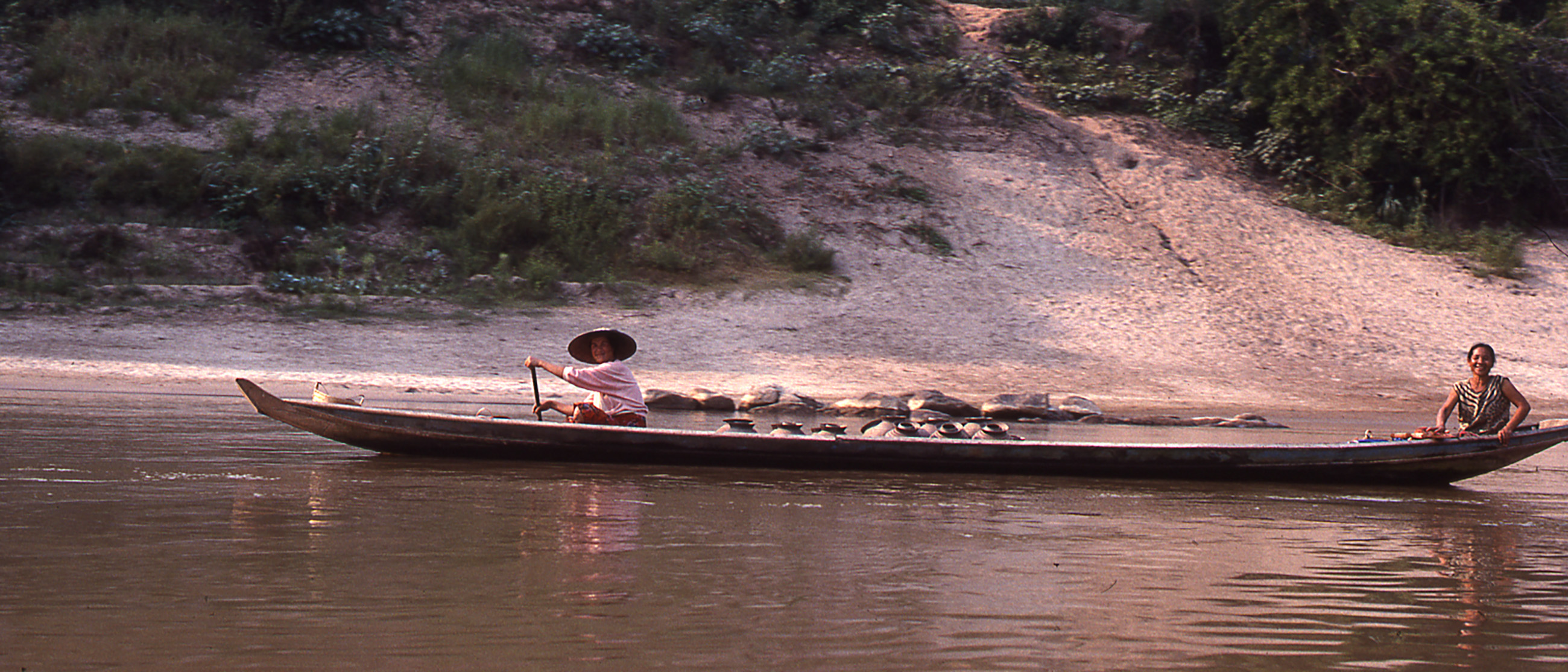
The major component of this catalogue is a collection of nearly 800 ceramics compiled by a remarkable family-brothers Osborne and Victor Hauge and their wives Gratia and Takako. The collection was created during the late 1960s and early 1970s, while Osborne and Gratia Hauge were living in Bangkok, Thailand, and then in Saigon (Ho Chi Minh City), Vietnam. Victor and Takako visited Osborne and Gratia on a number of occasions.
The Hauges bought their pots from reputable dealers in both capital cities. In Thailand, they also made purchases from vendors in Ayutthaya, who sold pots recovered from the riverbed; from the fabled Weekend Market; and during excursions to see kiln sites.
The Hauge Collection of Ceramics in Mainland Southeast Asia, a gift from the family to the Sackler Gallery, is notable for its adventuresome and informative breadth. It encompasses not only the well-known varieties of glazed and decorated wares from Thailand and Vietnam, but also a range of less familiar storage jars, unglazed stoneware containers, and earthenware cooking pots rarely represented in private or public collections. While living in Japan in the late 1940s, the Hauges had encountered the Japanese passion for utilitarian jars and pots, codified in the "folk craft" (mingei) movement of the 1920s onward. (Victor and Takako prepared the exhibition and book Folk Traditions in Japanese Art [New York: John Weatherhill, Inc., 1978].) The Hauges' awareness of the enduring appreciation by practitioners of the Japanese tea ceremony for unglazed stoneware vessels (including vessels imported to Japan from Southeast Asia in the sixteenth and seventeenth centuries) prepared them to respond with spontaneous sympathy to similar vessels in Thailand and Vietnam. They were also drawn to the textures and colors of earthenware vessels and amassed a large group of such pieces representing diverse local traditions. Many of the types of pottery they acquired had not yet been associated with a kiln site; some elude precise identification even now. The focus of the collection is on historical ceramics, although some prehistoric materials are also included.
The Hauge Collection at the Sackler Gallery complements a smaller group of ceramics from Southeast Asia housed in the adjacent Freer Gallery of Art. Collectively the two museums, administered by a single staff, comprise the national collections of Asian art at the Smithsonian Institution. The first Southeast Asian ceramics in the Freer Gallery collection were acquired sporadically and for the most part unknowingly by founder Charles Lang Freer (1854-1919) in the first two decades of the twentieth century. While building his collection in Japan, Freer bought several Southeast Asian ceramics that had been imported to Japan, used as tea ceremony utensils, and eventually mistaken for Japanese. Only in recent years have they been reidentified. Similarly, a Vietnamese bowl purchased by the museum in 1929 as Chinese (F1929.82) was discovered to be Dai Viet "royal" ware only in 2004. Freer curator and director John Alexander Pope (1906–82) purchased three classic Southeast Asian pieces during the 1960s and 1970s, to complement his interest in Chinese and Japanese ceramics. In the 1980s the collection began to grow more rapidly, thanks to significant gifts from Dean Frasché and Dorothy Slak as well as other donors of individual objects and purchases. At present the Southeast Asian ceramics in the Freer collection total 109 pieces.
A third component of the collections at the Freer and Sackler galleries is the Freer Study Collection. During his visits to Southeast Asia, Pope assembled sherds, wasters, and kiln tools for study and for technical analysis by the museum’s Department of Conservation and Scientific Research. He also encouraged donations by other collectors. Donors include Victor and Takako Hauge, Dean Frasché, Charles Nelson Spinks, Roy Galloway, John Menke, Dr. Sarah Bekker, and other pioneering scholars and notable collectors. The contents are described in Ceramic Sherds from Southeast Asia—The Freer Study Collection and its Donors.